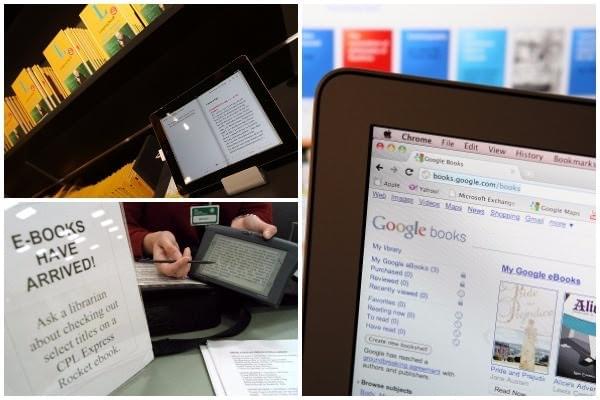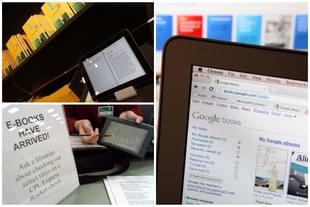Books
What Does It Mean To Be An Author In The Time Of E-Readers?
Harsha Bhat
Jul 09, 2017, 02:05 PM | Updated 02:05 PM IST
Save & read from anywhere!
Bookmark stories for easy access on any device or the Swarajya app.


One hundred and thirty years ago, the birth of an eccentric detective changed the way crimes are solved and how.
Astonishingly, though the crimes that were solved taking inspiration from his ways were real, the peculiar detective and his partner-in-crime-solving weren’t. Sherlock Holmes, the detective and Dr Watson who were born, thanks to their creator, author Sir Arthur Doyle not only inspired hundreds of readers to turn authors penning their own crime fiction but also redefined the genre.
But those were the times when the printed word was the closest companion to many and the pages of a book, no matter how vulnerable to the test of time, housed not just characters created by the author but the reader’s imagination and mind space for, at times, even months together.
But as cliched as it sounds, times change, and with it changes every aspect of human life, well almost. And the advances in technology have rewritten the rules of almost all walks of life.
Storytelling too under the wings of technology has undergone massive changes. Though there still exist those who find no parallels to sniffing the pages of the book as they sift through it, a large or rather larger audience is reading on various e-devices.
Hardcovers and paperbacks are making way for e-books, traditional publishing houses have to step up and take to multiple platforms, and authors have to write for readers who no longer curl up on a couch just to read their favourite author.
Technology also broke the fortress of traditional publishing houses that erstwhile aspiring authors would have to spend months and at times years to scale. While self-publishing opened up the doors for anyone to tell their story, social media has ensured they can find their readers too.
In a tete-a-tete with Swarajya, authors Mayuresh Didolkar and Saiswaroopa Iyer decode the tricks of this new trend that’s redefining the trade.
So what makes a writer? Given that everyone has stories to tell, what does it take to be an author?
Well, the journey for Mayuresh Didolkar, author of Kumbhpur Rising and The Dark Road, began at the other end of the spectrum, as a reader. “The popular wisdom that you have to read a lot in order to become a writer has some truth, especially at the start of a writing career. I suspect a good deal of writers start writing as a form of coveting, the same way children and teenage boys would imitate their favourite actors in front of a mirror. So that is how it started for me too. I would read a good book and go ‘can I ever write this good?’ I am still finding an answer,” he says.
For Saiswaroopa Iyer, it has been about finding a medium for the stories that had rested in her mental space since childhood, as she had been “the official story-teller of the extended family since childhood” with the Puranic tales giving her company always.
From penning down her own versions of them in the last pages of books in school to publishing her maiden novel Abhaya: The Legend of Diwali, she sure has held on to the tag of storyteller strongly. “Even when I wrote the very first draft of Abhaya after a long gap, I never had publishing in mind. My only drive was that the characters deserved my storytelling to be honed up. They deserved to be told to a larger audience. I went about rewriting draft after draft before finally publishing it in 2015. Now I only hope I shall be able to write down all those stories which grace my imagination,” she muses.
The stories may be the same, but the telling has to be different, as it is not a new generation of readers, but also a whole different medium with its own rules. Writers need to adapt to not just the times but also the technology. “Writers firstly need to realise that their reader is not the one who can afford the luxury of time to curl up on a couch with a book. Readers are there travelling, stuck in traffic jams, waiting in queues and other busy areas,” muses Iyer, saying that this where writers can and should “provide the reader with a temporary virtual escape through storytelling so that her journey or the wait becomes not so lonely and less frustrating”.
But writing in the digital era would never be the same if not for social media. Social media platforms have done what was unimagined. For any reader, being able to know and talk to the author of a book is a whole different high; one that had the letter-age readers write to their authors for years together, responding to every new character's actions and hoping for a response.
But with social media facilitating real-time conversation between the two, the dynamics of reader-author interaction have changed totally.
“Democratisation” is a word both authors echo. “I love social media. Social media has democratised the expression of opinion,” says Iyer, who credits it for her first break in writing. “It doesn’t matter if your book is in paper format or digital, you will still need to figure out the virtual/digital marketplace if you want to sell your book. In a sense this has also democratised the marketplace as you don’t need travel budget and tie-ins with national book chains to promote your book,” adds Didolkar.
Although, it isn’t all play and no work. While traditionally authors could focus only on how to tell well, today it is important that they also know how to sell well. On the mechanics of this new medium of marketing and promoting one’s own work, Iyer muses, “I think it is safe for me to say every person who played a role in taking my book to the next level (apart from family and friends) is someone I met in the virtual world. It makes the whole process of reaching out very grounded and requires us, writers, to be entrepreneurial in approach. There are challenges in figuring out what works, what does not and why. But there lies the excitement.”
Adding to that, Didolkar says, “I have spent all my career in sales and frankly speaking I enjoy the one-on-one feel that sometimes social media promotion can give to a writer. It is also important to be pragmatic about it and realise that while your primary responsibility as a writer is to produce content, you are not doing justice to the effort writing content takes if you do not take the additional effort to market it.”
But doesn’t over “democratisation” lead to dilution, as there is not much-stopping anyone from being a writer today?
“The possibility of being published has gone up. Equally importantly, writing is a trade as much as it is an art, especially if you wish to be a full-time writer,” says Didolkar. “To build a niche readership, you need to be able to produce content consistently over a fairly long time. So to that extent, the barrier to creating a niche is still there, and conversely, a professional writer can still dream of building a niche readership over a career.”
Talking of self-publishing which along with social media marketing has completely revamped the writing business, Iyer who chose to publish her maiden venture, calls it “Indie Publishing” and a choice she made between “waiting for an uncertain year before my book can even make it to the editorial department and then subsequently to stores which was not guaranteed or publishing it by myself, taking full responsibility, utilising the whole year to reach out to readers with a ready product rather than remaining an ‘aspiring author’.”
Well, true that. For in the words of Maya Angelou, “There is no greater agony than bearing an untold story inside you”.
Harsha is an Associate Editor at Swarajya. She tweets @bhatinmaai.





